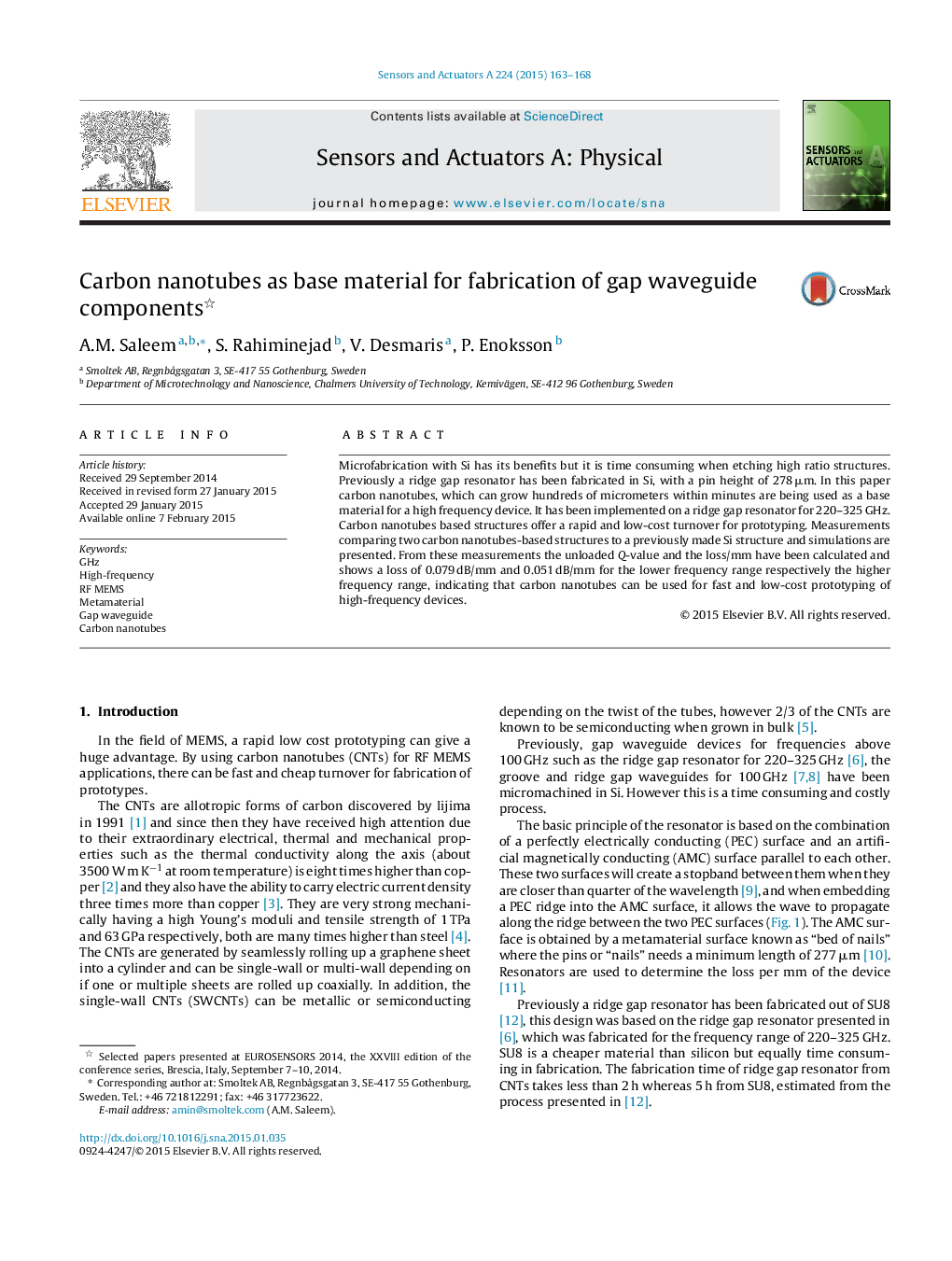| Article ID | Journal | Published Year | Pages | File Type |
|---|---|---|---|---|
| 736897 | Sensors and Actuators A: Physical | 2015 | 6 Pages |
•Ridge gap resonator has been fabricated using bundles of vertically aligned carbon nanotubes as a base material.•283 μm high bundles of vertically aligned carbon nanotubes grow in 3 min whereas it takes 92–139 min when the structures of same height are fabricated by etching silicon.•Resources used to fabricate ridge gap resonator using carbon nanotubes structures are cheaper and the process time is shorter resulting in a much lower process cost.
Microfabrication with Si has its benefits but it is time consuming when etching high ratio structures. Previously a ridge gap resonator has been fabricated in Si, with a pin height of 278 μm. In this paper carbon nanotubes, which can grow hundreds of micrometers within minutes are being used as a base material for a high frequency device. It has been implemented on a ridge gap resonator for 220–325 GHz. Carbon nanotubes based structures offer a rapid and low-cost turnover for prototyping. Measurements comparing two carbon nanotubes-based structures to a previously made Si structure and simulations are presented. From these measurements the unloaded Q-value and the loss/mm have been calculated and shows a loss of 0.079 dB/mm and 0.051 dB/mm for the lower frequency range respectively the higher frequency range, indicating that carbon nanotubes can be used for fast and low-cost prototyping of high-frequency devices.
